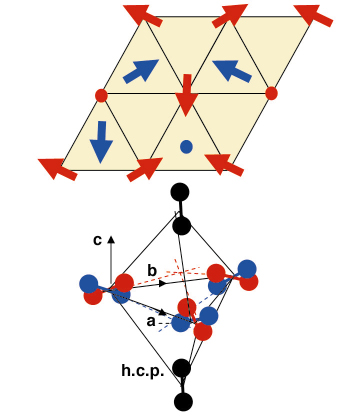

Fabrizia Negri (Università di Bologna, Italy).On the opportunities offered by restricted open-shell methods Frank Neese (Max-Planck-Institut für Kohlenforschung, Mülheim, Germany).High sectors of the intruder-free Fock space multireference coupled cluster method in the studies of excited states Monika Musial (University of Silesia in Katowice, Poland).Modeling experimental observables from excited state dynamics Spiridoula Matsika (Temple University, Philadelphia, USA).Polarization Models for Charged and Polar Molecules Sandra Luber (University of Zurich, Switzerland)ĭynamic methods for computational spectroscopy and excited states in condensed phase.The Three Billy Goats Gruff: Three Levels of Sophistication in SCF Orbital Optimization Procedures Roland Lindh (Uppsala University, Sweden).Go EAST, young scientist – First principles view on chemical compound space Anatole von Lilienfeld (University of Toronto, Canada).Polarisability and scattering at the single molecule limit Philipp Kukura (University of Oxford, United Kingdom).Anna Krylov (University of Southern California, Los Angeles, USA)įun with X-rays: New theoretical developments in EOM-CC inspired by experimental light science.Peter Knowles (Cardiff University, United Kingdom)Ĭoupling electrons, vibrations and photons in molecular quantum chemistry.Understanding the ‘Q’ of Biochemical Reactions: QM/MM Reaction Paths and Dynamics Jeremy Harvey (Katholieke Universiteit Leuven, Belgium).Leticia González (University of Vienna, Austria)Įxcited states and dynamics of coordination complexes.Peter Gill (University of Sydney, Australia).Machine learning configuration space and matrix product state ansatz Debashree Ghosh (Indian Association for the Cultivation of Science, Kolkata, India).Giulia Galli (University of Chicago & Argonne National Laboratory, USA)Įlectronic structure and coherent states of spin defects in molecules and solids.Localized Multireference Quantum Chemistry for Extended Systems Laura Gagliardi (University of Chicago, USA).Variational quantum computation of molecular response properties on a superconducting quantum processor Weihai Fang (Beijing Normal University, China).Molecular Electronic Structure at the Nexus of Classical and Quantum Computing Francesco Evangelista (Emory University, Atlanta, USA).Andreas Dreuw (Interdisciplinary Center for Scientific Computing, Heidelberg, Germany)Īlgebraic diagrammatic construction schemes for molecular computations.New quantum molecular dynamics methods: time-dependent vibrational coupled cluster theory with adaptive basis functions and direct dynamics approaches Ove Christiansen (Aarhus University, Denmark).Reduced-Scaling Coupled Cluster Theory in the Frequency and Time Domains Julia Contreras-García (Sorbonne Universités, Paris, France)įrom electron delocalization to predicting superconducting behavior.Bartolomeo Civalleri (University of Turin, Italy)Ĭost-effective hybrid HF/DFT composite methods for large-scale solid-state calculations.The quantum chemistry of high temperature cuprate superconductors Tucker Carrington (Queen’s University, Kingston, Canada)Ĭomputing vibrational spectra of Van der Waals molecules when the harmonic approximation is useless.Stochastic Vector Techniques in Electronic Structure Roi Baer (The Hebrew University of Jerusalem, Israel).Recent Progress with the Transcorrelated method: combining real-space approaches with quantum chemistry Ali Alavi (Max Planck Institute for Solid State Research, Stuttgart, Germany).Relativistic quantum chemical calculations for uranium isotope fractionation in biotic and abiotic systems Minori Abe (Hiroshima University, Japan).FACCTs BOOTH SPACE is open during coffee breaks and poster sessions.


 0 kommentar(er)
0 kommentar(er)
